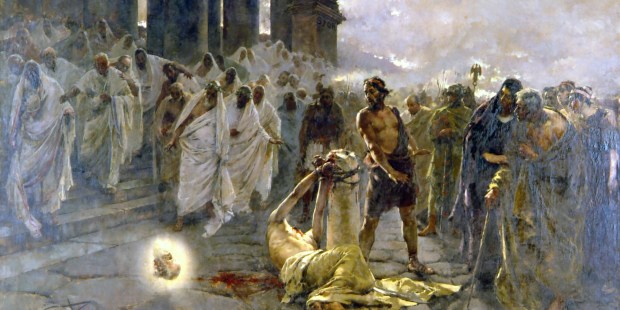- Feb 5, 2002
- 166,633
- 56,266
- Country
- United States
- Faith
- Catholic
- Marital Status
- Married
- Politics
- US-Others
Work of the noted Valencian painter Enrique Simonet Lombardo, the immense canvas vividly portrays the intense emotions of this decisive moment.
The Bible does not say how the Apostle Paul died. But somehow, in his Second Letter to Timothy, Paul seems to be anticipating his imminent demise:What we do know of Paul’s death, we know from the earliest pseudepigraphic series comprising the New Testament apocrypha, the Acts of Paul –a work that is purporting to be written by Paul himself, including letters, narratives, prayers, and apocalypses. One of the main sections of these apocryphal writings (which were declared antilegomena by Eusebius, in his Church History) is the Martyrdom of Paul.“For I am already being poured out as a drink offering, and the time of my departure has come. I have fought the good fight, I have finished the race, I have kept the faith. Henceforth there is laid up for me the crown of righteousness, which the Lord, the righteous judge, will award to me on that Day, and not only to me but also to all who have loved his appearing.”
2 Timothy 4:6
The Martyrdom of the Holy Apostle Paul tells the story of Paul’s last days in Rome. The text claims that, as Nero learned that Paul had resurrected a young man, he feared that the Empire might be overthrown by the Christians. Allegedly, this was the event that precipitated the Neronian persecution of Christians in general, as well as the specific order to behead Paul. The Martyrdom claims that when Paul was beheaded, milk (and not blood) spurted from his neck.
Continued below.

The beheading of Saint Paul in Málaga’s Cathedral
The work of the noted Valencian painter Enrique Simonet Lombardo, the immense canvas vividly portrays the intense emotions of this decisive moment.
